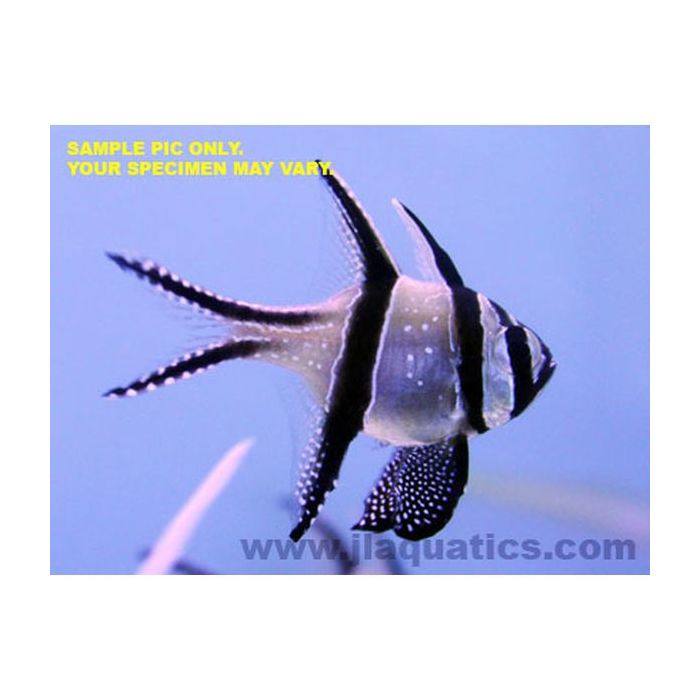Bangaii Cardinal (Tank Raised)
The Bangaii, or Kaudern�s cardinal, is a very popular fish and it�s easy to see why. Its long fins are decorated with countless stark white speckles over inky black. Its shiny silvery body is also banded with pure black stripes. It always holds its fins erect giving it a striking silhouette.
The Bangaii Cardinal is a peaceful, reef safe fish. Unlike other cardinals they prefer to live singly or in a mated pair and do not school well with their own kind or other cardinals. They are typically safe with invertebrates; however, it has a large mouth and may attack small shrimp or tiny fish. They are easy to feed on a variety of frozen foods, but will need time to adapt to dry food.
It prefers an aquarium with some overhangs and caves which it may spend time in during the day. Cardinals are hardy and do not require much swimming space compared to other fish. The bangaii cardinal grows up to 3 Inches; we recommend an aquarium of at least 20 gallons for a single fish and 30 gallons or larger for a pair.
Wild populations of this fish are found only within the Banggai Archipelago in Indonesia and are endangered, so as such we only offer this species when available tank bred. It has been known to spawn even in community aquariums. Pairs will swim and rest together most of the time and may be extremely aggressive towards others of the same species. After breeding, the male will hold the eggs in his mouth to protect them. It may take several weeks for the eggs to hatch, during which time the male does not feed. Once released the baby fish find shelter within the spines of the Long Spine urchin, their stripes providing excellent camouflage. If an urchin is not available then a substitute shelter will be used, usually a coral or mangrove.
Males and females are very similar; there are a few very subtle differences on adult fish. Males may have a more square shaped jaw and a slightly longer second dorsal fin. On well fed adults it may also be noted that females appear to have one vent while males have two.
















